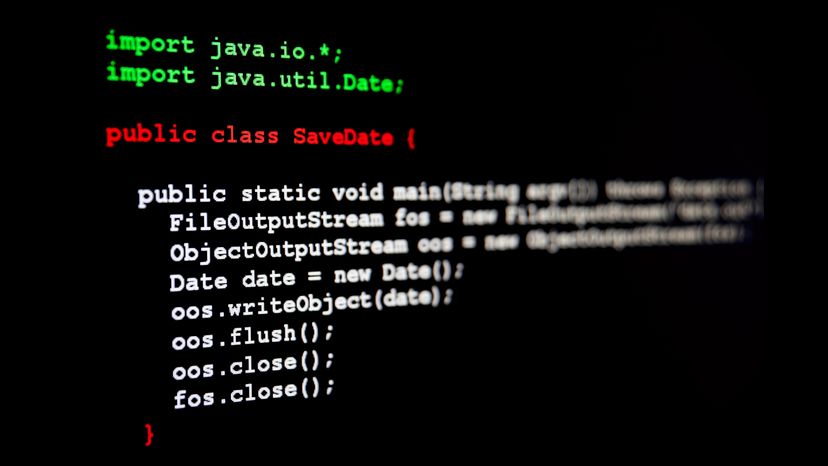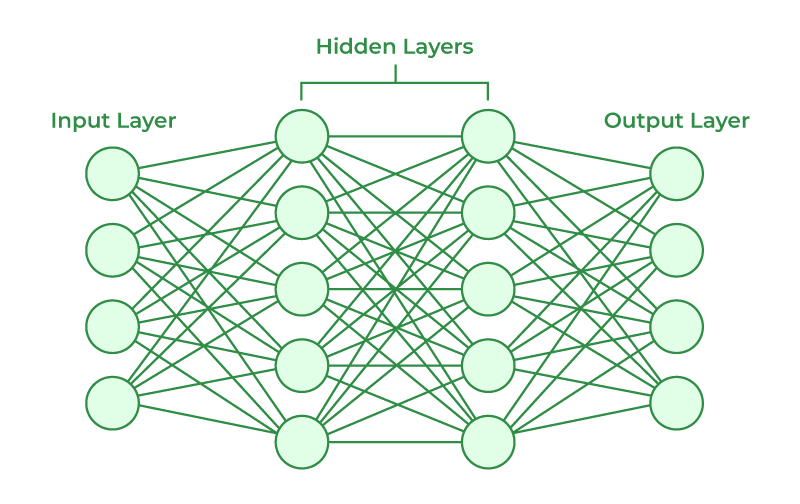The Java ecosystem is not just alive; it’s innovating at a breathtaking pace. Far from being a static, legacy platform, Java is undergoing a renaissance, driven by the relentless work within the OpenJDK community and the rapid evolution of its surrounding frameworks. As we look towards JDK 25 and beyond, several key trends are emerging that will fundamentally reshape how developers write, deploy, and scale applications. This latest wave of OpenJDK news reveals a platform that is becoming more performant, more developer-friendly, and surprisingly, a major new player in the world of Artificial Intelligence.
This article provides a comprehensive technical overview of the most significant developments shaping the future of Java. We’ll explore the groundbreaking features maturing in the core JDK through projects like Loom, Panama, and Valhalla. We’ll also examine how this innovation is rippling through the entire Java ecosystem news, influencing the roadmaps of essential frameworks like Spring and Jakarta EE, and powering new libraries like LangChain4j that bring the power of Large Language Models (LLMs) directly to Java developers. Get ready to explore the future of Java, happening right now.
The Core Platform Evolves: A Look Inside OpenJDK and JDK 25
The heart of Java’s evolution lies within the OpenJDK project, where a series of ambitious, long-term initiatives are finally bearing fruit. These projects are not just minor tweaks; they represent a fundamental rethinking of the JVM’s approach to concurrency, native code interoperability, and memory layout, directly impacting Java performance news and developer productivity.
Project Loom Reaches Maturity: Virtual Threads and Structured Concurrency
For years, Java’s concurrency model has been tied to heavyweight, OS-level threads. This model, while powerful, becomes a bottleneck in high-throughput applications that handle thousands of concurrent I/O-bound tasks. The latest Project Loom news changes everything. Having been finalized in Java 21 news, Virtual Threads are now a production-ready reality. These are lightweight threads managed by the JVM, not the OS, allowing a single application to handle millions of concurrent tasks with minimal overhead.
This paradigm shift makes highly scalable, thread-per-request style code viable again. Paired with Structured Concurrency, which simplifies error handling and cancellation in multi-threaded code, Java’s concurrency story is now simpler and more powerful than ever. This is arguably the most impactful Java concurrency news in over a decade.
Consider the difference in creating a million tasks. The old way with platform threads would crash your machine. The new way with virtual threads handles it with ease.
import java.time.Duration;
import java.util.concurrent.Executors;
import java.util.stream.IntStream;
public class VirtualThreadsDemo {
public static void main(String[] args) throws InterruptedException {
// Create a new virtual thread executor
// This creates a new virtual thread for each submitted task
try (var executor = Executors.newVirtualThreadPerTaskExecutor()) {
IntStream.range(0, 1_000_000).forEach(i -> {
executor.submit(() -> {
// Simulate a lightweight, I/O-bound task
try {
Thread.sleep(Duration.ofSeconds(1));
} catch (InterruptedException e) {
Thread.currentThread().interrupt();
}
if (i % 100_000 == 0) {
System.out.println("Task " + i + " completed on thread: " + Thread.currentThread());
}
});
});
} // executor.close() is called automatically, waiting for all tasks to complete
System.out.println("All million tasks have been submitted and completed.");
}
}
Bridging Worlds: Project Panama and the Foreign Function & Memory API
Interacting with native libraries (e.g., C/C++) has historically been a complex task in Java, requiring the cumbersome and error-prone Java Native Interface (JNI). The latest Project Panama news provides a modern, safe, and purely Java-based solution: the Foreign Function & Memory (FFM) API. This API allows Java code to call native functions and access native memory directly, without boilerplate or C-stubs. This is a game-changer for performance-critical applications, scientific computing, and integrating with existing native libraries. It gives developers the power of native speed with the safety of the JVM.
import java.lang.foreign.Arena;
import java.lang.foreign.FunctionDescriptor;
import java.lang.foreign.Linker;
import java.lang.foreign.SymbolLookup;
import java.lang.foreign.ValueLayout;
public class PanamaFFMDemo {
public static void main(String[] args) throws Throwable {
// 1. Get a linker for the native platform
Linker linker = Linker.nativeLinker();
// 2. Look up the standard C library
SymbolLookup stdlib = linker.defaultLookup();
// 3. Find the address of the 'strlen' function
var strlenAddress = stdlib.find("strlen").orElseThrow();
// 4. Define the function signature: long strlen(char*)
FunctionDescriptor strlenDescriptor = FunctionDescriptor.of(ValueLayout.JAVA_LONG, ValueLayout.ADDRESS);
// 5. Create a method handle for the function
var strlen = linker.downcallHandle(strlenAddress, strlenDescriptor);
// 6. Use a try-with-resources Arena to manage native memory
try (Arena offHeap = Arena.ofConfined()) {
// 7. Allocate native memory and copy a Java string into it
var nativeString = offHeap.allocateFrom("Hello, Project Panama!");
// 8. Invoke the native function
long length = (long) strlen.invoke(nativeString);
System.out.println("The length of the native string is: " + length); // Outputs: 22
}
}
}
The Quest for Performance: Updates from Project Valhalla

While Loom and Panama are here today, Project Valhalla news offers a glimpse into the future of JVM performance. Its primary goal is to enhance Java’s type system with “value types” or “primitive classes.” These are objects that behave like primitives—they lack object identity and their data can be stored flatly in memory or even in CPU registers. This will eliminate the memory and performance overhead associated with standard object headers, leading to massive improvements in data-intensive applications. While still in development, JEPs related to Valhalla are actively being worked on, promising a future where developers can achieve C-like performance with Java’s safety and productivity.
The Framework Frontier: Spring, Jakarta EE, and Reactive Programming
Core JDK innovations invariably trigger a wave of updates across the ecosystem. Major frameworks are racing to integrate these new features, providing developers with idiomatic and powerful abstractions.
Spring Framework and Spring Boot: Embracing the Future
The latest Spring news shows a clear commitment to leveraging modern Java. Upcoming releases of Spring Framework and Spring Boot are expected to double down on their support for new OpenJDK features. A key area is the deep integration of virtual threads. By simply enabling a configuration property, Spring Boot applications can switch their embedded Tomcat server to use virtual threads, immediately improving scalability for I/O-bound web applications without requiring code changes. The Spring Boot news also continues to focus on GraalVM native image compilation, which, when combined with the efficiency of virtual threads, creates a powerful stack for building cloud-native microservices that are both highly scalable and incredibly fast to start up.
Jakarta EE: Modernizing Enterprise Java
The enterprise space is also seeing significant evolution. The latest Jakarta EE news highlights the platform’s focus on standardization for modern architectures. A prime example is the recent release of Jakarta NoSQL 1.0. This specification provides a unified API for interacting with a wide variety of NoSQL databases, including document, key-value, and column-family stores. This abstracts away vendor-specific APIs, making applications more portable and developers more productive. It’s a crucial step in modernizing the enterprise data persistence story, complementing existing standards like JPA (covered by Hibernate news).
Here’s a conceptual example of how you might use the Jakarta NoSQL API to save a simple entity:
import jakarta.nosql.mapping.Column;
import jakarta.nosql.mapping.Entity;
import jakarta.nosql.mapping.Id;
import jakarta.nosql.mapping.document.DocumentTemplate;
import javax.enterprise.inject.se.SeContainer;
import javax.enterprise.inject.se.SeContainerInitializer;
// Define the entity
@Entity
class Book {
@Id
private String id;
@Column
private String title;
// Constructors, getters, setters...
}
public class JakartaNoSQLDemo {
public static void main(String[] args) {
// This is a simplified example. In a real app, CDI would manage this.
try (SeContainer container = SeContainerInitializer.newInstance().initialize()) {
DocumentTemplate template = container.select(DocumentTemplate.class).get();
Book book = new Book();
book.setId("978-0321356680");
book.setTitle("Effective Java");
// Persist the entity to the configured document database
template.insert(book);
// Retrieve the entity
var foundBook = template.find(Book.class, "978-0321356680");
foundBook.ifPresent(b -> System.out.println("Found: " + b.getTitle()));
}
}
}
The New Frontier: Java and the Rise of Artificial Intelligence
Perhaps the most exciting development is Java’s rapid emergence as a first-class citizen in the world of AI. For too long, Python has dominated this space, but new libraries and frameworks are bringing powerful AI capabilities to the robust, scalable, and type-safe environment of the JVM.
Introducing LangChain4j: Building LLM-Powered Applications in Java
The latest LangChain4j news is a testament to this trend. LangChain4j is a powerful and intuitive library that simplifies the development of applications powered by LLMs. It provides a clean, fluent API for interacting with models from providers like OpenAI, Hugging Face, and Google Gemini. It handles complex tasks like prompt templating, chaining multiple LLM calls together, and implementing Retrieval-Augmented Generation (RAG) to allow models to answer questions based on your private data. This makes it incredibly easy to add sophisticated AI features like chatbots, summarizers, and data analysis tools to any Java application.

Here’s how simple it is to create a basic AI service with LangChain4j:
import dev.langchain4j.model.chat.ChatLanguageModel;
import dev.langchain4j.model.openai.OpenAiChatModel;
public class AiChatDemo {
public static void main(String[] args) {
// You would get your API key from a secure source
String openApiKey = System.getenv("OPENAI_API_KEY");
if (openApiKey == null || openApiKey.isBlank()) {
System.out.println("Please set the OPENAI_API_KEY environment variable.");
return;
}
// Create an instance of the OpenAI chat model
ChatLanguageModel model = OpenAiChatModel.builder()
.apiKey(openApiKey)
.modelName("gpt-3.5-turbo")
.temperature(0.7)
.build();
// Send a prompt to the model and get a response
String prompt = "In 3 bullet points, explain why Java's virtual threads are a game-changer for concurrency.";
String response = model.generate(prompt);
System.out.println("AI Response:");
System.out.println(response);
}
}
The Broader AI Ecosystem: Spring AI and More
The movement doesn’t stop with a single library. The Spring AI news reveals a project aimed at applying the core Spring principles of abstraction and dependency injection to AI development. Spring AI provides a common API for interacting with different AI models, making it easy to switch between, for example, OpenAI and an open-source model running locally, with minimal code changes. This integration with the familiar Spring ecosystem, including Spring Boot auto-configuration, makes adding AI capabilities to enterprise applications a seamless experience.
Best Practices for Navigating the Evolving Java Landscape
With so much change, it’s crucial to have a strategy for adoption. Here are some Java wisdom tips for navigating this new era.
When to Adopt New Features
A key practice is to differentiate between preview features and finalized features. Finalized features, like the virtual threads in Java 21, are ready for production. Preview features, like some of the FFM API components in earlier JDKs, are for experimentation and feedback. For production systems, it’s wise to stick to Long-Term Support (LTS) releases like Java 17 and Java 21. Use the non-LTS releases in development and testing environments to prepare for the next LTS and provide valuable feedback to the OpenJDK community.
 AI neural network – Physics – Nobel Prize: Mimicking Human Intelligence with …
AI neural network – Physics – Nobel Prize: Mimicking Human Intelligence with …Performance and Security Considerations
New features require new thinking. Virtual threads excel at I/O-bound tasks but won’t speed up CPU-bound computations; understanding this distinction is key to effective use. Similarly, the FFM API from Project Panama is incredibly powerful, but interacting with native memory carries inherent risks. Always use structured scopes like `Arena.ofConfined()` to ensure native memory is managed safely and to avoid memory leaks. This is a critical piece of Java security news for developers using the new API.
Tooling and Testing in the Modern Era
Ensure your entire toolchain is up-to-date. Modern IDEs, build tools like Maven (with Maven news pointing to the 4.0 release) and Gradle, and testing frameworks are essential. The latest JUnit news and Mockito news show these tools are evolving to support testing new concurrency models and other modern Java features, which is crucial for maintaining code quality.
Conclusion: A Vibrant Future for Java
The current wave of Java news paints a clear picture: Java is more dynamic and relevant than ever. The platform is undergoing a profound transformation, driven by foundational improvements from OpenJDK and a vibrant ecosystem of distributors like Adoptium, Azul, Amazon Corretto, and BellSoft. The maturation of Project Loom has revolutionized concurrency, Project Panama is tearing down the barriers between Java and native code, and the rise of libraries like LangChain4j and Spring AI is positioning Java as a formidable platform for AI development.
For developers, the path forward is exciting. The key is to engage with these changes proactively. Start experimenting with virtual threads in your I/O-heavy applications. Explore the FFM API for that performance-critical module. Begin prototyping AI features with LangChain4j. By embracing this evolution, you can build applications that are more scalable, performant, and intelligent than ever before, securing Java’s place at the forefront of software development for years to come.

